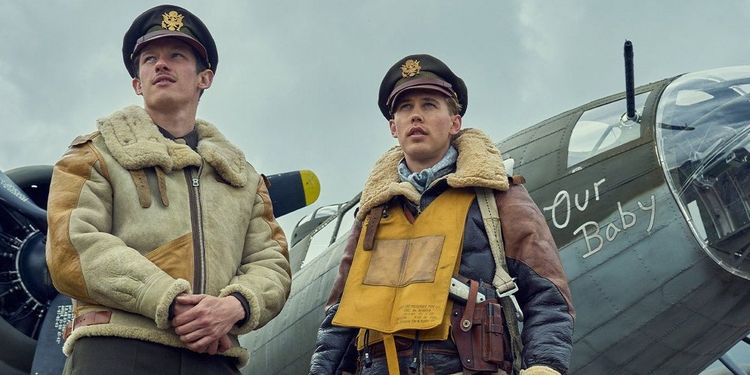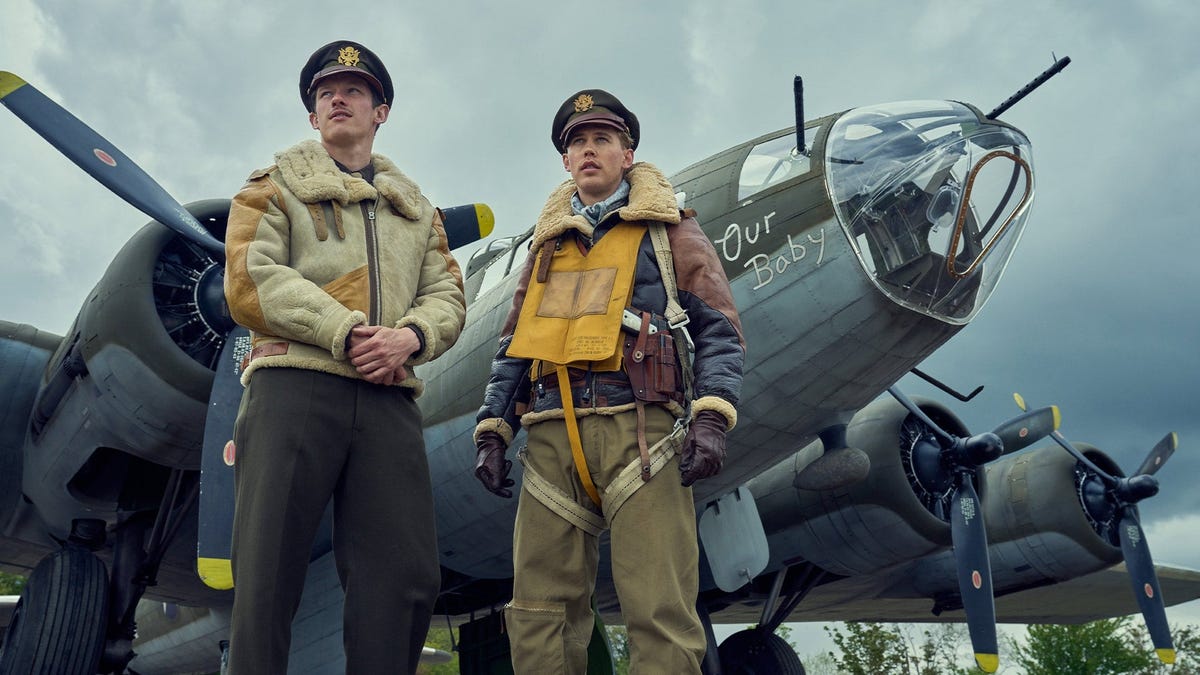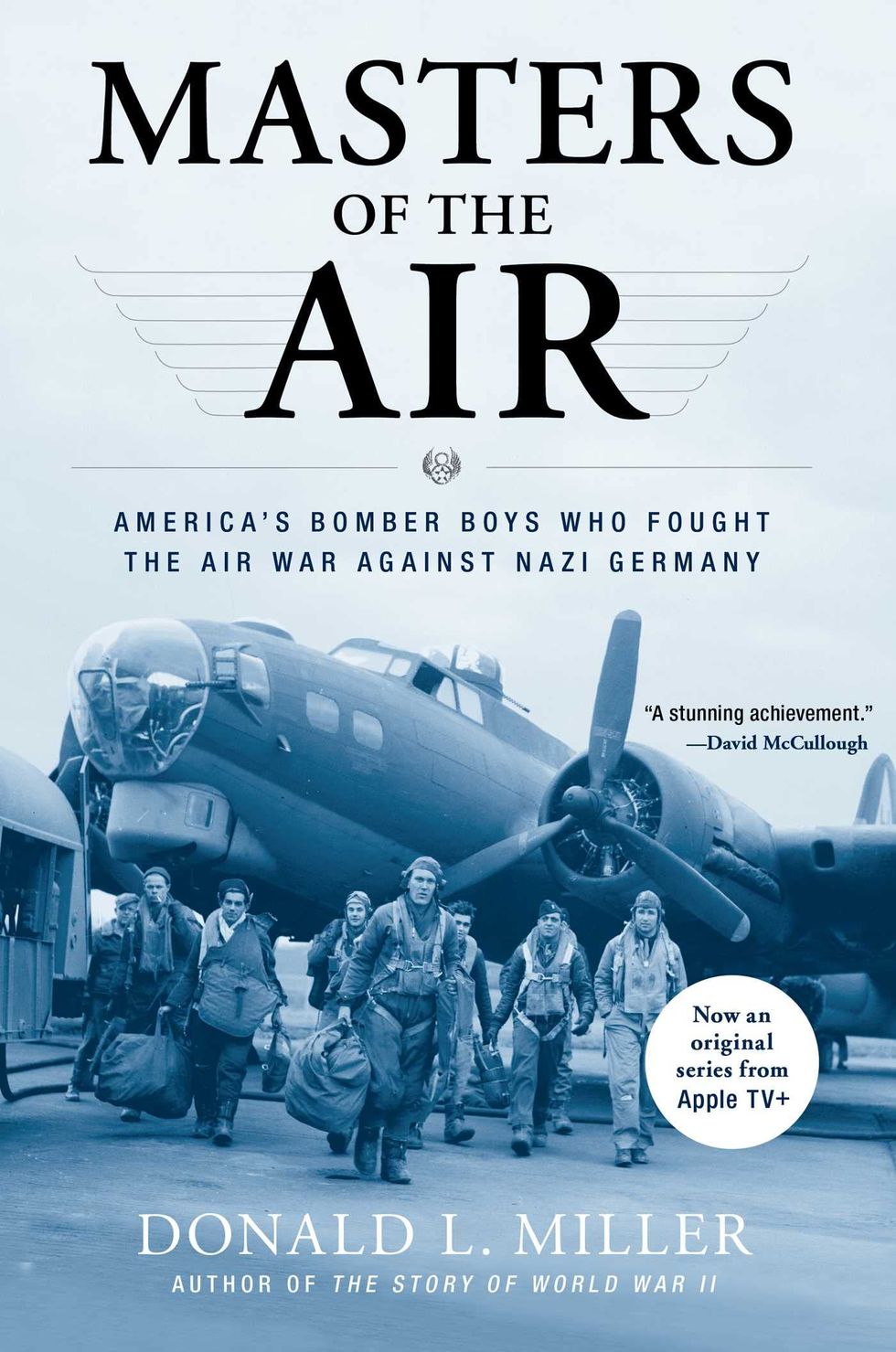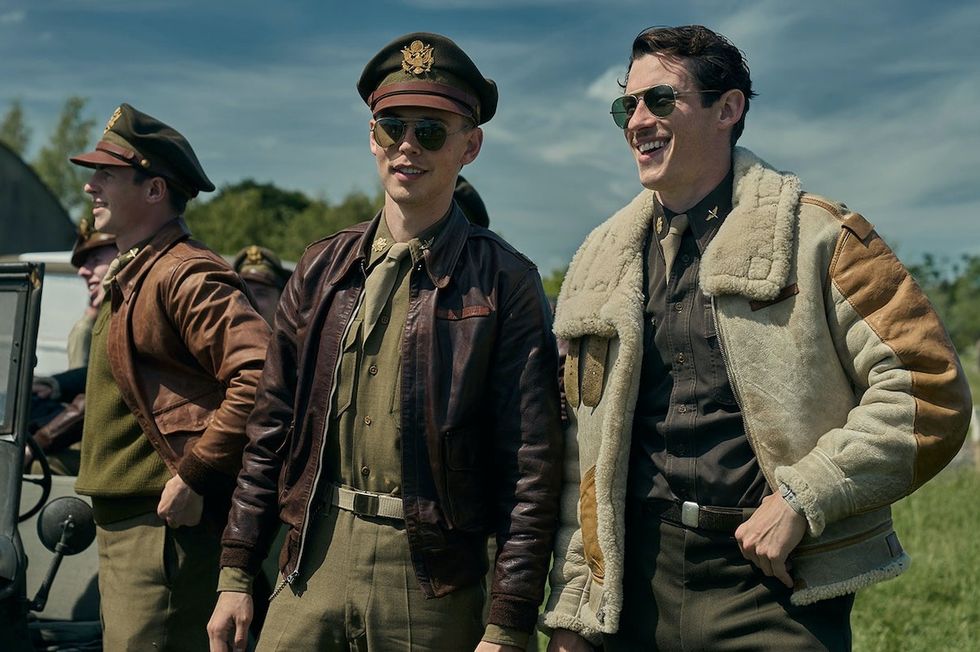The Triumphant and Tragic True Story of ‘Masters of the Air’

Your dad has a new top TV show on Apple TV+ called Masters of the Air. It is based on Donald L. Miller's novel, Masters of the Air: America's Bomber Boys Who Fought the Air War Against Nazi Germany. This series comes from the same group of executive producers as HBO's highly acclaimed series, Band of Brothers and The Pacific, which includes Tom Hanks, Steven Spielberg and Gary Goetzman.

Looking at the aerial warfare of World War II, the show boasts a large and talented cast that includes Austin Butler, Callum Turner, Anthony Boyle, and Barry Keoghan, among many other actors you may recognize from TV or movies. And let's not forget the team of creative minds behind the camera, featuring Cary Joji Fukunaga from True Detective and No Time to Die, Anna Boden and Ryan Fleck from Captain Marvel, Dee Rees from Mudbound, and Tim Van Patten from the acclaimed series Band of Brothers.
The television series, Masters of the Air, showcases the Bloody Hundredth, which is the 100th Bomb Group, and their mission in Europe. The series is similar in tone to its sister program, both triumphant and tragic. For those who would like to learn more about the group, we've put together a guide to the real-life historical significance of this aerial group during one of the most crucial periods of World War II.
"100th Bomb Group Pre-WWII: A Historical Overview"
The 100th Bombardment Group, which we'll refer to as the 100th from now on, wasn't sent to the World War II theater until some time had passed. The Army Air Force activated the group on June 1, 1942, about six months after Pearl Harbor was bombed. However, no one was assigned to the group until early November 1942, when a few aircrews and B-17, also known as the Flying Fortress, were provided from the Boeing production plant.

The 100th group left New York in May 1943 and went to Thorpe Abbotts in Norfolk, England. They stayed there for the entire duration of WWII.
The 100th Bomb Group: WWII History
On June 25, 1943, the 100th participated in its very first mission in combat. This was in collaboration with the United States and the Eighth Air Force. Their goal was to execute a bombing campaign in the Bremen U-Boat Yards. The strategy used was called "area bombing," which was influenced by the German Blitz on Britain. This involved the destruction of residential areas as a way to weaken enemy morale. During daytime missions, the Eighth provided support to the RAF by attacking military and industrial facilities.
"American Bomber Boys Vs Nazi Germany: Simon & Schuster's Masterful Account"
America's Bomber Boys Vs. Nazi Germany: Simon & Schuster's Masters Of The Air
The 100th squadron was severely impacted by the attacks and was even given the unpleasant moniker "Bloody Hundredth" due to the high amount of casualties it suffered. For example, in October of 1943, a raid resulted in only one out of 13 bombers making it through, with the rest being shot down. The surviving bomber also sustained significant damage and caused injuries to the crew.

Even though there was a lot of destruction, there were still moments of triumph. The 100th squadron was given two special awards - one for taking down a German aircraft factory in Regensburg in August 1943, and another for bombing Berlin multiple times in March 1944. Additionally, the 100th helped out during the Battle of the Bludge from December 1944 to January 1945, and as a result, the team was given the French Croix de Guerre with Palm.
In April 1945, the 100th completed its last combat mission and was then tasked with dropping food supplies in the Netherlands. The group also assisted in transporting French prisoners of war back to their country. By December 1945, the remaining members of the 100th had returned to the United States, just in time for Christmas as they got back four days before the holiday.
The 100th Bomb Group's Post-WWII History?
In 1953, the 100th was reactivated as part of the Strategic Air Command and was active until 1966, mostly staying on standby due to Cold War tensions. Later, the 100th moved its focus towards functioning as a group responsible for refueling efforts in the United Kingdom. The 100th Air Refueling Wing managed the European Tanker Trask Force in the early 1990s until 1998. According to a fact sheet on the Royal Air Force's website, the 100th Air Refueling Wing remains "the only U.S. tanker wing assigned to Europe and Africa, refueling U.S. and partner nation aircraft over an area of more than 20 million square miles utilizing the KC-135 Stratotanker aircraft." It is still in operation today.

William Goodman is an independent author who concentrates on everything related to popular culture, technology, devices, and fashion. He resides in Washington, DC, and you can also find his publications in Robb Report, Complex, and GQ. He has an affection for jackets and cardigans and has never encountered one he didn't adore. When he's not occupied, he's presumably scrolling through Twitter (@goodmanw) or viewing films.













































